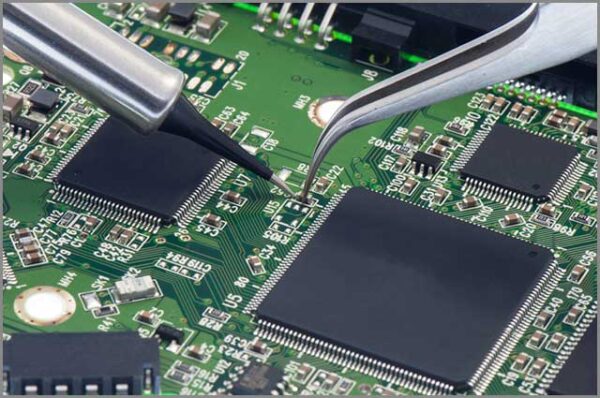Welcome to the intricate realm of PCB assembly, where circuits come to life, propelling technology forward! Whether you’re a tech enthusiast or simply intrigued by the inner workings of electronic devices, delving into the diverse methods of PCB assembly is the key to unraveling the complexities of these advanced systems. From the precision of Surface Mount Technology (SMT) to the reliability of Through-Hole Technology (THT), various assembly techniques play a pivotal role in shaping the landscape of printed circuit boards. Engineers and manufacturers face the challenge of selecting the most suitable method, each offering distinct advantages and unique characteristics. Join us on this captivating exploration of the PCB assembly landscape that fuels our digital world!
Surface Mount Technology (SMT): Miniaturization Marvels
SMT Unveiled
Surface Mount Technology (SMT), a cornerstone in PCB assembly, transforms the landscape by mounting electronic components directly onto the circuit board’s surface. This method boasts advantages like reduced size, heightened component density, and enhanced electrical performance.
The SMT Symphony
SMT components, smaller and lighter than their Through-Hole counterparts, find their niche in compact devices like smartphones and tablets. The assembly process involves applying solder paste to circuit board pads, placing components, and heating the entire board to create secure connections.
SMT: Efficiency Redefined
Revolutionizing PCB assembly, SMT not only ensures faster production and lower costs but also facilitates automated processes, minimizing human errors and maximizing efficiency. Its applications span diverse industries, from consumer electronics to automotive marvels.
Through-Hole Technology (THT): A Stalwart in Reliability
The Essence of THT
Through-Hole Technology (THT), a traditional assembly method, contrasts with SMT by involving the insertion of component leads into holes on the circuit board. Robust solder joints ensure durability, making THT ideal for applications demanding resistance to vibration and high temperatures.
THT: Reliability Redefined
THT’s reliability extends to easy repair and component replacement. Its individual component mounting allows for straightforward desoldering and replacement, a key advantage. However, challenges in efficiency and cost-effectiveness arise in high-volume production scenarios.
THT’s Enduring Presence
Despite SMT’s prominence, THT remains pivotal in industries where reliability and ease of repair take precedence in PCB assembly projects.
Harmony in Diversity: Mixed Technology Assembly
The Fusion Approach
Mixed technology assembly seamlessly blends SMT and THT, strategically utilizing each method based on component size, cost, performance requirements, and availability.
The Art of Balancing
This hybrid approach offers flexibility in component selection, providing designers and manufacturers with the freedom to optimize production processes. Efficiency gains and reduced manufacturing times are the hallmarks of this adaptable assembly technique.
A Cost-Effective Symphony
Mixed technology assembly emerges as a cost-effective solution, harmonizing the advantages of both SMT and THT methods, offering a versatile and efficient PCB assembly strategy.
Single-Sided Assembly: The Elegance of Simplicity
The Single-Sided Canvas
Single-Sided Assembly, a basic yet elegant method, involves mounting electronic components exclusively on one side of the circuit board, reserving the other side for routing and traces.
Cost-Efficiency in Focus
Known for its cost-effectiveness, single-sided assembly simplifies designs and manufacturing steps, making it suitable for less complex applications. However, space constraints limit its viability for high-density circuits.
A Timeless Choice
While not universally applicable, single-sided assembly remains a favored choice for straightforward PCB designs where simplicity and cost efficiency are paramount.
Double-Sided Assembly: Bridging Complexity and Flexibility
The Dual Perspective
Double-Sided Assembly elevates flexibility by allowing component placement on both sides of the board, a stark departure from single-sided assembly.
Beyond Boundaries
This method caters to applications demanding more complex circuitry or constrained space, maximizing component density and creating smaller, compact PCBs.
Vias: Connecting the Dots
Vias, small holes facilitating electrical signal passage between layers, ensure proper connectivity in double-sided assembly, enhancing design flexibility and complexity.
Multilayer Assembly: Scaling Heights in Complexity
The Multilayer Marvel
Multilayer Assembly, a pinnacle in PCB assembly, involves stacking multiple layers, enabling intricate and compact designs suitable for high-density electronic devices.
Efficiency Through Layers
Interconnecting layers via strategically placed vias optimizes signal integrity and minimizes electrical noise. Improved thermal management, crucial in preventing component failure, is an added benefit.
Performance Amplified
Multilayer assembly stands out for its enhanced functionality and performance, making it a preferred choice in industries demanding compact yet powerful electronic solutions.
Navigating the Options: Choosing Wisely
The Tapestry of Choices
In the diverse landscape of PCB assembly, from SMT and THT to mixed technology, single-sided, double-sided, and multilayer assembly, each method comes with its considerations. Factors like cost, complexity, reliability, and specific design requirements should guide engineers and manufacturers in their method selection.
In Conclusion: Empowering Choices, Inspiring Innovations
The Continuing Journey
As we conclude our exploration, the dynamic world of PCB assembly unveils a tapestry of choices. Whether designing consumer electronics or high-end industrial equipment, staying abreast of the evolving trends in PCB assembly is crucial for success.
The Empowerment of Understanding
Understanding the nuances of various assembly methods empowers designers and manufacturers to make informed decisions, aligning their choices with specific project needs. As technology propels forward, anticipate further innovations in PCB assembly techniques, enhancing efficiency and performance.
Remember: Seek professional advice when selecting the most appropriate PCB assembly type for your unique application requirements!
